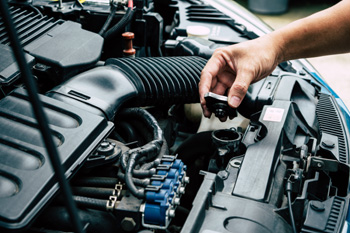Suppose you push on the brakes and the petal goes down a little further than you expected.  Suppose you were going to stop in the parking lot, and it appeared the brakes didn’t respond the first time you put your foot on the petal. Is there a problem?
Suppose you were going to stop in the parking lot, and it appeared the brakes didn’t respond the first time you put your foot on the petal. Is there a problem?
Until this incident occurred you probably haven’t given your brake system much thought. Sure, you know your brakes should be inspected and serviced every once in a while… but how do they actually make your car stop with just a tap of the foot?
When you really stop and think, you realize brakes are a pretty amazing invention. They have the power to bring a large, multi-ton machine traveling at 70 miles per hour to a complete stop with just a push of the pedal. This ability is all thanks to science!
A moving car has a lot of kinetic energy, meaning “energy in motion.” To stop your car, your brakes must eliminate that kinetic energy. When you push your foot to the pedal, a connected lever will be pushed into a small cylinder filled with hydraulic fluid in its reservoir. This causes the hydraulic fluid to travel through a system of lines into other larger cylinders, or calipers, located by the wheel. When fluid enters the caliper, this pushes the caliper to actuate the brake pad against the brake rotor. When the brake pad and brake rotor meet, this generates friction which in turn slows down the outer wheel and tire… bringing your car to a complete stop! Simple, right?
The brakes themselves are one of two types: disc brakes or drum brakes. Drum brakes appear similar to a drum, hence the name. Drum brakes have shoes located inside the drum which are pushed outward when you press your brake pedal. This causes the shoes to rub the inside of the drum and slow the wheel. Disc brakes operate a bit differently. Disc brakes use a metal rotor which spins with the wheel. When you push the pedal, a caliper squeezes the brake pads against the rotor and slows the wheel. This action is very similar to the one you would use to stop a spinning disc by squeezing it between your fingers!
The next time you drive your vehicle, take a moment to appreciate your brake system and the science used to bring your car to a halt with just the tap of a pedal. Take care of your brake system by having it inspected and serviced regularly by an experienced technician to ensure that when you need your car to stop, it will.
Lim’s Auto Body is a full service auto body and mechanical repair shop locally owned and operated in Largo, Florida. For more information, go to our web site www.limsautobody.com or call (727) 422-3232.

